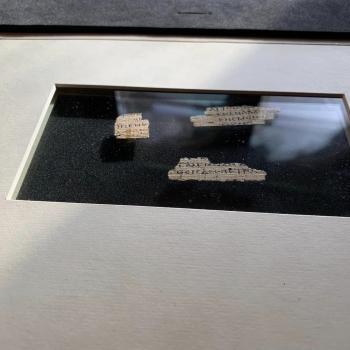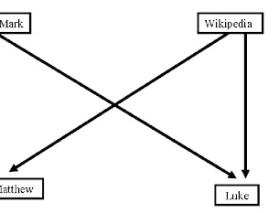A recent article about Ken Dark’s archaeological work in Nazareth, now published in his book Roman-Period and Byzantine Nazareth and its Hinterland, says:
The new archaeological investigation – the largest ever carried out into Roman period Nazareth – has revealed that Jesus’s hometown is likely to have been considerably bigger than previously thought. It probably had a population of up to 1,000 (rather than just being a small-to-medium sized village of 100-500, as previously thought).
And again:
The newly emerging picture of Roman-period Nazareth as a place of substantial religiosity does, however, resonate not only with the emergence of its most famous son, Jesus, but also with the fact that, in the mid-first or second century, it was chosen as the official residence of one of the high priests of the by-then-destroyed Temple in Jerusalem, when all 24 of those Jewish religious leaders were driven into exile in Galilee.
I wonder how this should be correlated with the fact that Jesus’ maternal grandparents are supposed to have lived in Sepphoris, and that Jesus’ view of ritual purity ended up being less strict than that of many of his contemporaries.
The connection between 1 Enoch and Upper Galilee also makes me wonder about what all this means for our understanding of Jesus. That Jesus may have been shaped in a context that did not view Torah the way Judaeans in general or authorities in Jerusalem did needn’t mean that they were lax regarding purity. One can reject a text altogether as an authority and yet still practice a great deal that is found in it. One can also pick and choose and it will not necessarily mean that ritual purity concerns are among the things left to one side.
A later Enochic work has some direct connections to the teaching of Jesus, and it is hard to puzzle out precisely why and thus what the significance thereof might be.
From the blog Reading Acts on this relationship:
The principle of an eye for an eye
See also Jim Davila’s posts Jesus and Nazareth and More on Ancient Nazareth.
On Matthew Korpman’s blog, he gives a taste of a new writing project he is working on, about the historical Jesus. He writes:
For Christians who are unsure what to think about the research done on the pursuit of reconstructing the Historical Jesus, it might be helpful to utilize Mark’s account to make sense of it.
It turns out that the idea that there is a difference between the Jesus that everyone would have known and the version of him proclaimed after the resurrection (a common claim of Historical Jesus researchers) is a concept as old as the gospel accounts themselves.
And in this respect, the very idea of a Historical Jesus is as biblical as they come.
It will seem ironic to some, but biblical inerrancy is a profoundly unbiblical idea, while the possibility of diverse perceptions of Jesus, and having to wrestle with who he is and what he meant, are profoundly biblical.














